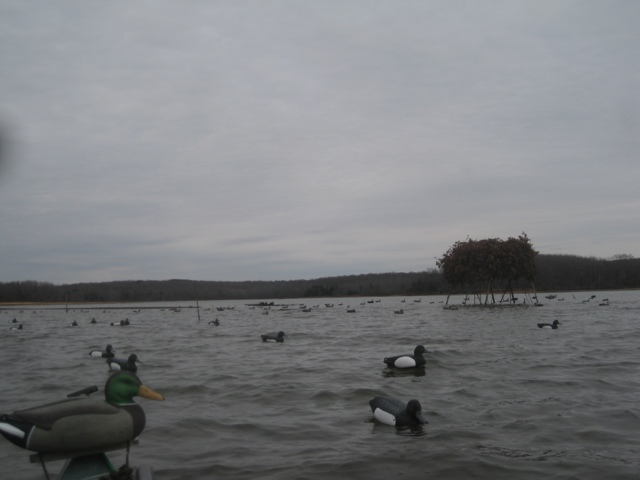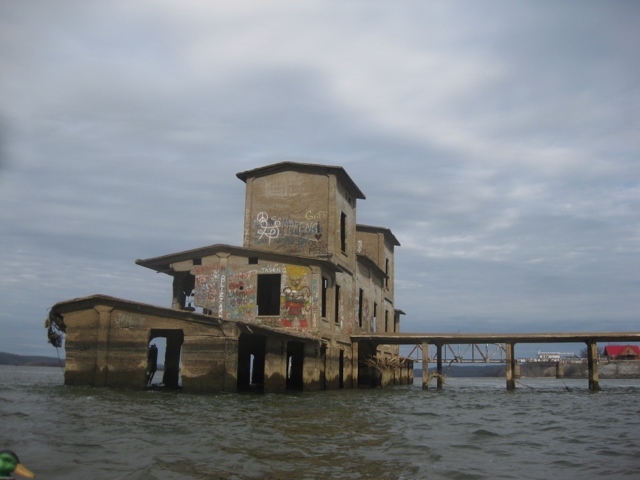Paddled since last blog: 122 miles
Total paddled: 822 miles
To go: 1043 miles
Current location: Illinois on the Ohio River
Granola bars consumed since last blog: 12
Total: 86
Fun Size Snickers: 4 more bars
Total: 39
Days paddled: 34
We had a great visit with Annica with free hot showers, Super Walmart resupply, watching a multiple hour arrest go down, Ranger Justin, and hiking to the highest point in West Tennessee (669 feet). We learned
Paddling Lesson #112
If there's a warrant for your arrest, don't park where park rangers patrol.
We entered Kentucky and paddled next to Land Between the Lakes National Recreation Area which has elk and bison! We saw a bunch of bald eagles. If anybody knows what an adolescent bald eagle looks like, let us know in a comment because we think we saw several... We also paddled up close to a large flock of white pelicans! That was cool.
There's been a lot of barges, a majority carrying coal. In Kentucky, barge captains wave back to us! As we were finishing locking through Kentucky Lock, a barge operator actually radioed us. The barges have been good neighbors to us on the river and extended their reach to shore....
We decided it was about time for a rainy lunch when we happened upon a gazebo. We happily paddled toward it and we noticed a man with a camo boat using the ramp. We were surprised by his cotton wearing in the rain and were confused what the fuck he was doing. We had a short interaction as we darted to the gazebo. He quickly sped off in his boat leaving his van on the ramp, and while we were eating lunch, we were commenting on how slowly the passing barge was going. While surveying the scene, we saw our boater man pull up and make an exchange with a person on board. Then the barge sped up and the man returned to the boat ramp. Upon returning, the man headed towards us with a crate and was disappointed to discover how quickly we had eaten our lunch. After some confusion, he explained that when he told the barge chef what we were doing, she packaged a warm lunch for us. It contained 2 CoolWhip containers of gumbo (duct taped with love to prevent spills), fried shrimp, fried catfish, French fries, 2 Sprites, and even spoons! Christmas came early and this has made 5 great meals for Liddell. Best barge exchange yet!
Today we celebrated three major milestones. We completed our through paddle of the 652 mile Tennessee River, we visited Paducah, Kentucky, and we arrived in Illinois.
Our current read aloud book "With A Southern Accent" written by Liddell's Great Aunt Viola provides
Paddling Lesson #12
If you can't sell corn on the ear, sell it on foot.
Merry Christmas to all! And remember during your holiday festivities
Paddling Lesson #84
If you choose to cool your beverage in the river, be sure to tie it up.
 |
| Duck blind with lots o' decoys |
 |
| Coal from Kentucky |
 |
| Abandoned grain silo that's actually 5 stories high, bottom 2 are flooded |

Merry Christmas Adventurers! fabulous to hear you're out there and still in it... Immature Bald Eagles: As large as mature parents this time of year... body will be mostly all brown but mottled with white feathers, distinctive all white head and tail coloration not quite developed, so all in all they look like a cross between a turkey vulture (with the finger-like wing tips) and a red tailed hawk (mostly brown with white features)... the distinctive yellow bill in the adult is absent at the curved tip in the juvenile, it will have a yellow base and darker tip... both have bright yellow feet! ... welcome to the Big Muddy, ladies! keep warm and have more fun while traveling a long way and looking good...
ReplyDeleteYeah pretty much what Kristian said, They look like Golden eagles for the first ~5 years of their life, that's when they develop the white heads.
ReplyDeleteParty on Wane.
I'm glad you asked something about bald eagles.
ReplyDeleteThe Bald Eagle (Haliaeetus leucocephalus) is a raptor (though Jurassic Park told me a raptor was something much different) that is indigenous to North America, and is the national symbol of... AMMERRRICAAA, fuck yeah!! The species was on the brink of extinction late in the 20th century but has largely recovered and now has a stable population.
The bird gets its English and scientific names from the distinctive white color of the adult's head feathers (OH SHIT REALLY!?). "Baeld" is the Old English word for white; Haliaeetus is the New Latin for sea eagle, from Greek haliaetos, and leucocephalus is the Greek for white head, from leukos (white) and kephale (head).<-- For the record, spell check doesn't think anything in this paragraph makes any sense whatsoever...
THIS IS THE ONLY PIECE OF INFORMATION YOU ASKED FOR SO READ CAREFULLY:
An immature bird has speckled brown feathers all over (END OF PERTINENT INFORMATION), the distinctive head and body plumage arriving 2-3 years later, before sexual maturity. Adult females have a wingspan of approximately 2.1 meters (7 feet); adult males have a wingspan of 2 meters (6 feet, 6 inches). Adult females weigh approximately 5.8 kg (12.8 lbs), males weigh 4.1 kg (9 lbs). In other words, the female birds can beat the male birds in a game of basketball due to their strictly superior wingspans.
Bald eagles are powerful fliers (and lovers), and ride thermal convection currents to range far. If you are ever attacked by a bald eagle, it is recommended to cover yourself with a space heater so the animal cannot approach because it will float up and away from you. Or else trick it into eating magnets and hold a magnet, but be careful to hold your magnet the right way so that it repels instead of attracts.
Bald Eagles are sexually mature at 4 or 5 years of age (though 5 years is the legal age of consent). Mated pairs produce between one and three eggs per year, but it is rare for all three chicks to successfully fledge (fledge /flej/; verb: to get into a bird fraternity/sorority). Third, chicks are sometimes removed from nests to use in reintroduction programs in areas where the species has died out, or to be eaten by hungry barge drivers.
In such programs, the birds are raised in boxes with foxes, on platforms in the tree canopy, and fed green eggs and ham in such a way that they cannot see the person supplying their food (accomplished by stabbing their eyes out), until they are old enough to fly and find their own food.
Bald Eagles which are old enough to nest often return to the area in which they were raised. They are more social than many other raptor species (duh, everyone knows raptors are extinct): an adult bald eagle looking for a nesting site is more likely to select a location that contains other immature eagles (the kind that farts at the dinner table) than one with no eagle population.
The Bald Eagle's diet is varied, including fish, smaller birds, rodents, food scavenged or stolen from campsites and picnics areas, or kayakers.
This species has occurred as a vagrant once in Ireland, where it ate all the leprechauns. The exhausted specimen was discovered by a national parks worker in a northern heath. Presumably, a storm blew it out to sea, and the bird struggled across the Atlantic Ocean.
Hope you found this to be everything you asked for and more!!
Love, and may the Mississippi be swift and your umbrellas sturdy.
Also for what it's worth, I wanted to just post a picture but I couldn't so I figured I'd write a thousand words instead...
ReplyDeleteThose look like ducks to us
ReplyDeleteYAY KARA AND LIDDELL!
ReplyDeleteThanks for paddling through TN!
How did I miss this blog!? Love that what I thought was going to be a scary ending to a story actually ended with Gumbo. Kick ass. Now I'm going to read the next entry. Love you.
ReplyDelete